Home - Contact Us - Cold War Hist. - 91st SRS Hist. - Stardust 40 Mission Story
|
||||||||
|
If you have had time to review the Cold War references earlier in this presentation, you may have noted the shoot-down statistics for U.S. classified reconnaissance missions — A total of 31 various aircraft between 1950 and 1970. Speaking from the experience of our crew, it might be considered the “Luck of the Draw” as to which crews became a part of the tragedies involved in this intellegence-gathering effort. The most logical goal, for any of these crews, was to remain among the majority who would eventually return home, rich in adventuresome experiences, and feeling to be among the very fortunate of those working in this “spooky” business.
Although our squadron was equipped primarily with RB-29s, there were almost always a couple of RB-45s and RB-50s parked near our operational headquarters. These aircraft were assigned on a temporaty duty (TDY) basis to perform special missions that were beyond the capabilities of our rather weary RB-29 fleet. During my entire assignment with the 91st SRS, I don’t recall ever being introduced to or knowingly encountering an RB-45 crew member. We heard snatches of stories of their encounters and escapes from North Korean airspace, but never more than this. We had rare encounters with the RB-50 crewmembers. This was most likely to happen if we were assigned some kind of a mission support function on their behalf. In the case of our own crew, we were assigned to support an RB-50 penetration of Soviet airspace where the mission was compromised and aborted before the opposition forces had time to plot our location and carry out the destruction of both of our aircraft and crews. Briefly stated, our crew was selected to fly air sea rescue for the RB-50, whose point of destination was a spot deep within the expanse of the Sea of Okhotsk, north of Hokkaido, Japan. Their mission, to fly in at wavetops, below radar coverage, at the proper time, pop up to be identified by Soviet radar. In so doing, the RB-50 crew would identify and record the frequencies and location of their radar sites, pop back down to wavetop height and head for home. All of this in total darkness. Our task, as air sea rescue, was to be right behind them, ready to drop lifeboats and equipment to them, in the water, if they were shot down. (There was no mention as to who would come to our aid, if we also were shot down.) With liferafts tucked in one bombay and extra gas in the other (a total of 19+ hours of fuel) we escorted the RB-50 to Missawa AB in Northern Hokkaido, topped off our tanks, and awaited the departure signal. In late afternoon, we followed the RB-50 down the runway, flew to coast-out position, dropping down to wavetop height, headed north. Soon after entering Soviet airspace, in conditions of radio silence, we received a call from the RB-50 — one word, “abort”. In compliance we reversed course and returned to Missawa AB, finding rapidly deteriorating weather conditions and fading light. By the time we had maneuvered our gas-heavy RB-29 into a GCA approach, the visibility was below 1/8th of a mile and deteriorating rapidly. With some effort we found the runway and managed to get the heavy aircraft stopped before running off the end. Upon shutting down and locating the RB-50 aircraft commander, we learned they had almost taken the mast off of a Soviet destroyer, compromising the mission. As it turned out, this was the last day of the season that would provide sufficient darkness to conduct the mission, so we were told to fly back to Yokota and go about our business. Did this coincidental series of events become a gift of extended life for the crewmembers of one or both of these aircraft? We will never know. In the spring of 1954 our crew was selected to fly to a base in the Philippine Islands and stand by for instructions for a special photo mission. As we made preparations for our departure from Yokota, world news reports were filled with the crisis of the French forces in North Vietnam. They were surrounded and besieged at a location in western North Vietnam called Dien-bien-phu. The strategy afoot, from our point of view, was that our crew would penetrate North Vietnamese airspace, under the cloak of darkness, take aerial photos using king sized flash bombs, and then head for home with valuable film footage. As the crisis deepened, our departure was delayed while President Eisenhower pondered whether our country should become involved, at this place, at this time. His decision was “no”. Our deployment was called off. Did our crew miss the opportunity to be the first USAF aircrew shot down in what later became known as the Vietnam War? We will never really know because of the “luck of the draw.” |
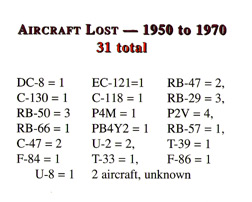 |
|||||||
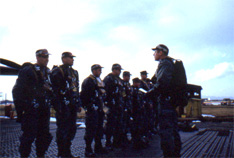 |
||||||||
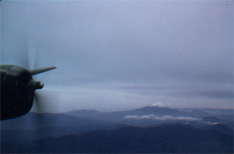 |
||||||||
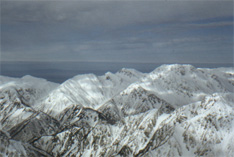 |
||||||||
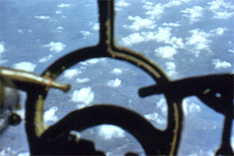 |
||||||||
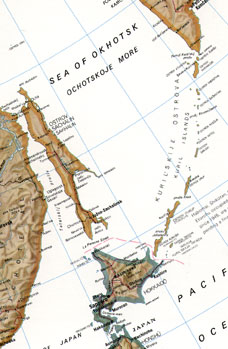 |
||||||||
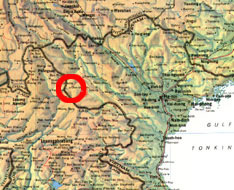 |
||||||||
|
Dien-bien-phu is inside the red circle, within a short distance from the boarder of Laos |
||||||||
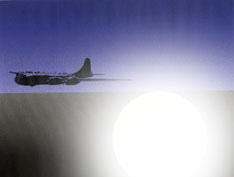 |
||||||||
|
PREVIOUS — CONTENTS PAGE — NEXT Home - Contact Us - Cold War Hist. - 91st SRS Hist. - Stardust 40 Mission Story |
||||||||